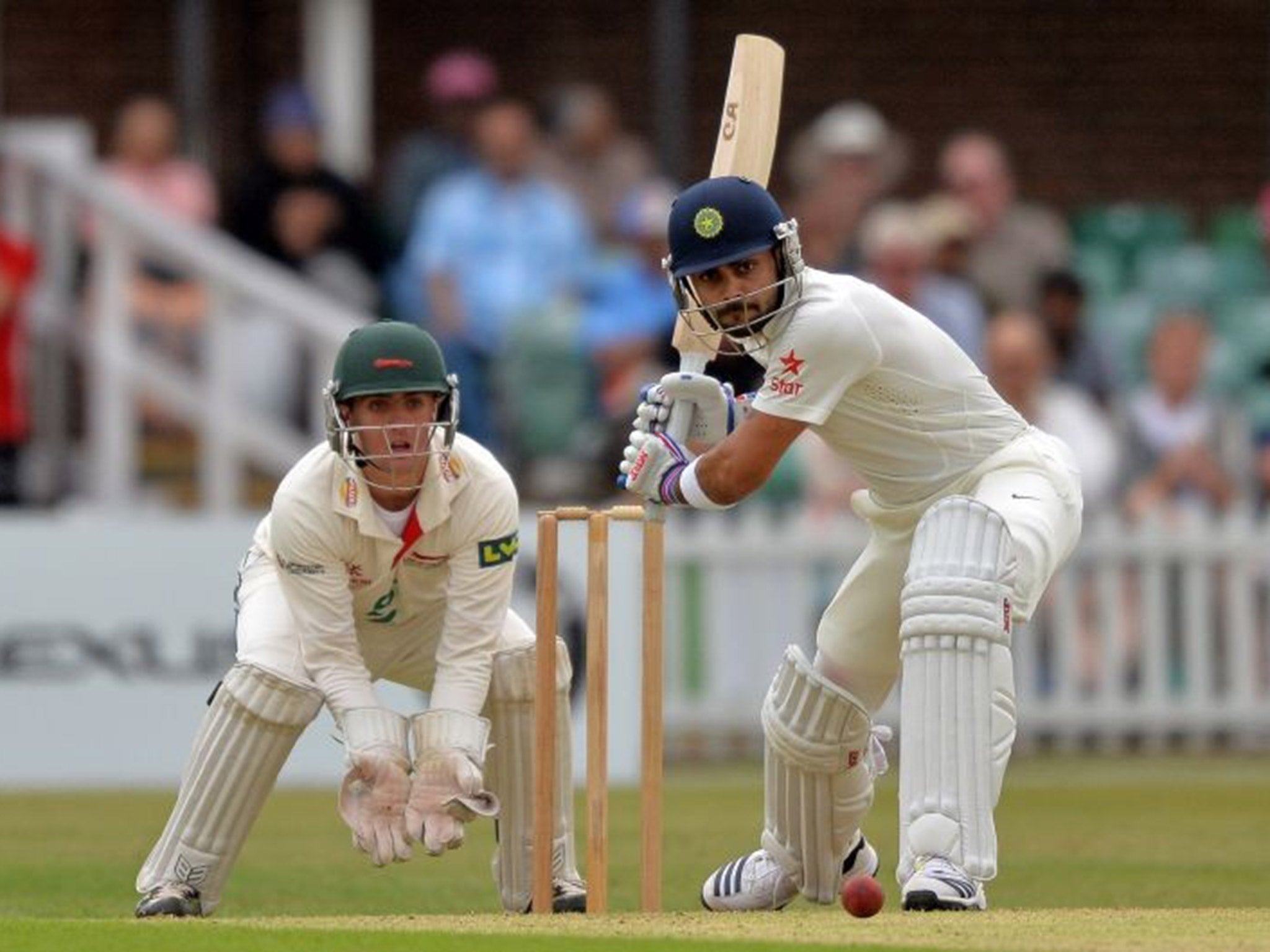Virat Kohli and Co lead charge of India’s new generation
England's new order will have to be at their most patient and proficient to match the tourists'

India have arrived in unfamiliar guise. Gone finally are all the great batsmen who made them such a force and such a delight. Sachin Tendulkar, the most durable of the lot, was the last to depart the stage amid unprecedented fanfare in Mumbai late last year.
He was the most illustrious component of a batting order which had a feasible claim to being the most formidable that ever existed. But it would be a huge mistake to think that their replacements are pushovers. Far from it, as England will find in the next six cramped weeks.
In its way, the series of five Investec Test matches which starts at Trent Bridge on Wednesday is a clash of the freshmen. England’s changes, enforced and voluntary, have so far been a resounding success.
Only three of the tourists’ party of 18 have played a Test in England before. While they may struggle to take 20 of their opponents’ wickets, the batsmen look highly capable of scoring plenty of runs. England’s new order will have to be at their most patient and proficient to match them.
It is only three years since England wiped the floor with India at home, winning 4-0; only 18 months since they won a momentous victory in India, coming from behind to prevail 2-1. In 2011, the last remnants of India’s magnificent batting order were still in place: Tendulkar, Virender Sehwag, VVS Laxman, Rahul Dravid. Only Dravid, with three centuries, still had what it took.
Now the torch has been passed on. These batsmen cannot yet bear comparison with their predecessors but they are indubitably exciting.
The poster boy of Indian cricket is Virat Kohli. A stellar presence in the limited-overs formats, he is still ranked in the top 10 of Test batsmen. Kohli bats with a twinkle in his eye. His defence is organised, he has an array of shots and a rightly high opinion of his ability.
If and when MS Dhoni ever retires as India’s captain, Kohli will be his successor. One of his six Test hundreds was against England in Nagpur in at the end of 2012 when he was admirably circumspect over six hours.
Then there is Cheteshwar Pujara, the No 3, the new Dravid, and new in England but not to England. He averages almost 60 from his 32 Test innings and two of his six hundreds were doubles, the first of them against England.
At the start of the last series between the sides in India, Pujara was breathtakingly accomplished. He was a model of probity who made batting look the calmest occupation in the world and he started the series with 206 not out, 41 not out and 135. Things tailed off a little after that but Pujara is a serious, upright batsman with a straight bat who should not be disrupted by English pitches.
Ajinkya Rahane, who played in the one-day series in England three years ago without pulling up trees, was kept waiting for his Test debut until early last year. Batting at six, he has added ballast to the late middle-order and made his maiden hundred in India’s most recent Test in Wellington in February.
There is one familiar batting name in the party. Gautam Gambhir was recalled after a prolific domestic season and his experience may be felt essential. But his three Tests in this country three years ago were unhappy affairs and he did not play in the final Test.
Either he or Murali Vijay, who has had a chequered Test career of 22 matches spread over six years, will probably open with Shikhar Dhawan, a smiling assassin. Dhawan was 27 when he made his Test debut and scored 187 from 174 balls against Australia. Last year he was player of the tournament in the Champions Trophy in England. In Dhawan, India have another player who will not perish waiting.
What this order needs is cohesion. India have fallen into the sort of rut away from home which beset them for so many years. From their start in 1932, they went 36 years and 43 Tests before winning away from home; in the 1980s and 1990s they managed sequences without a solitary away victory of 26, 25 and 22 matches.
The latest run under Dhoni is 14 since they beat West Indies by 63 runs in Kingston, the first match under their coach, Duncan Fletcher. Since then they have been whitewashed in England and Australia, been defeated in South Africa and New Zealand. Test cricket and India are no longer a marriage made in heaven.
But this time it is different. This is the first five-Test series that India have played in 12 years, their first in England since 1959. Ticket sales for the first two matches and the last are superb.
It should be much closer and better contested than in 2011 but if England lose, they are in a heap of trouble.
Subscribe to Independent Premium to bookmark this article
Want to bookmark your favourite articles and stories to read or reference later? Start your Independent Premium subscription today.

Join our commenting forum
Join thought-provoking conversations, follow other Independent readers and see their replies